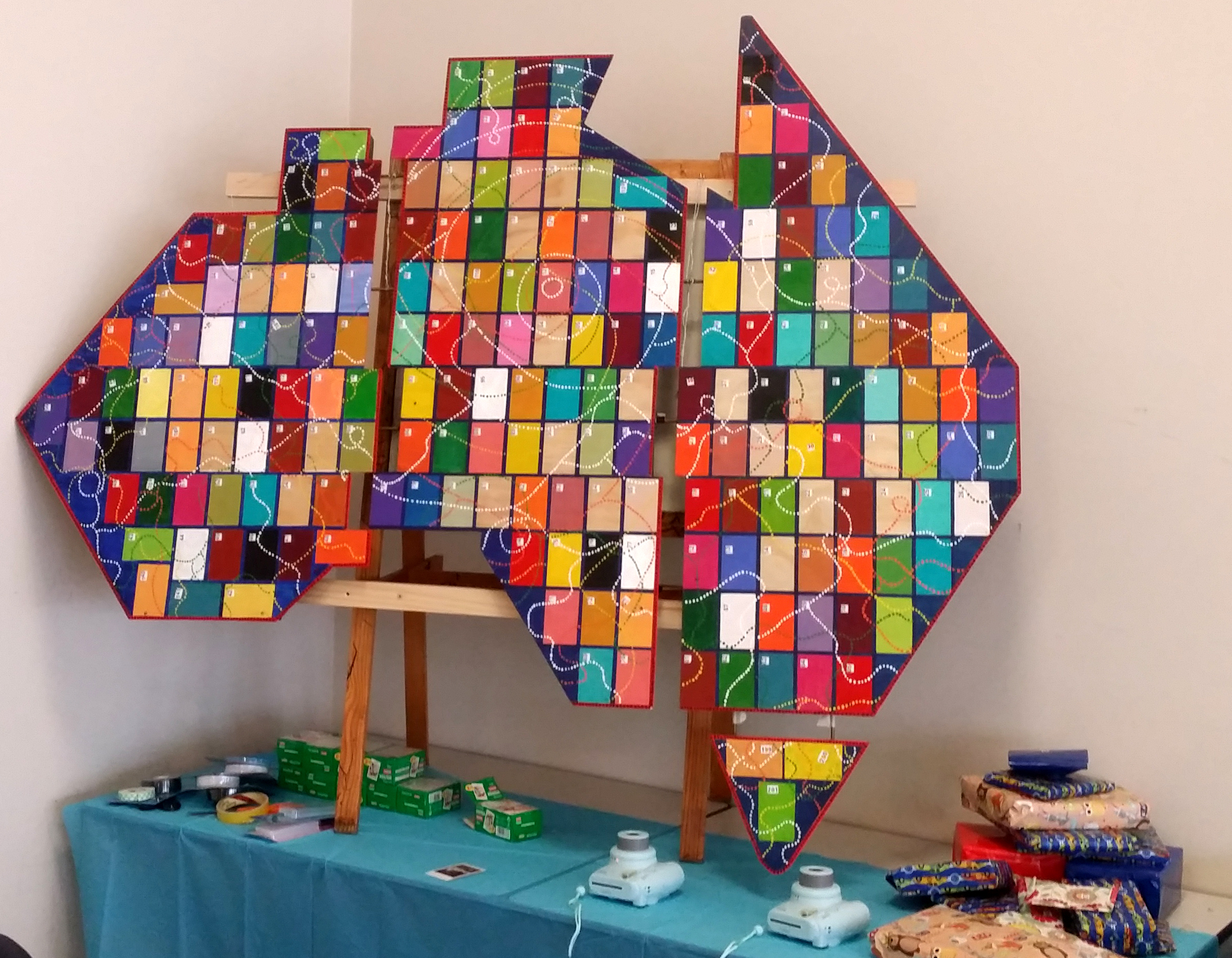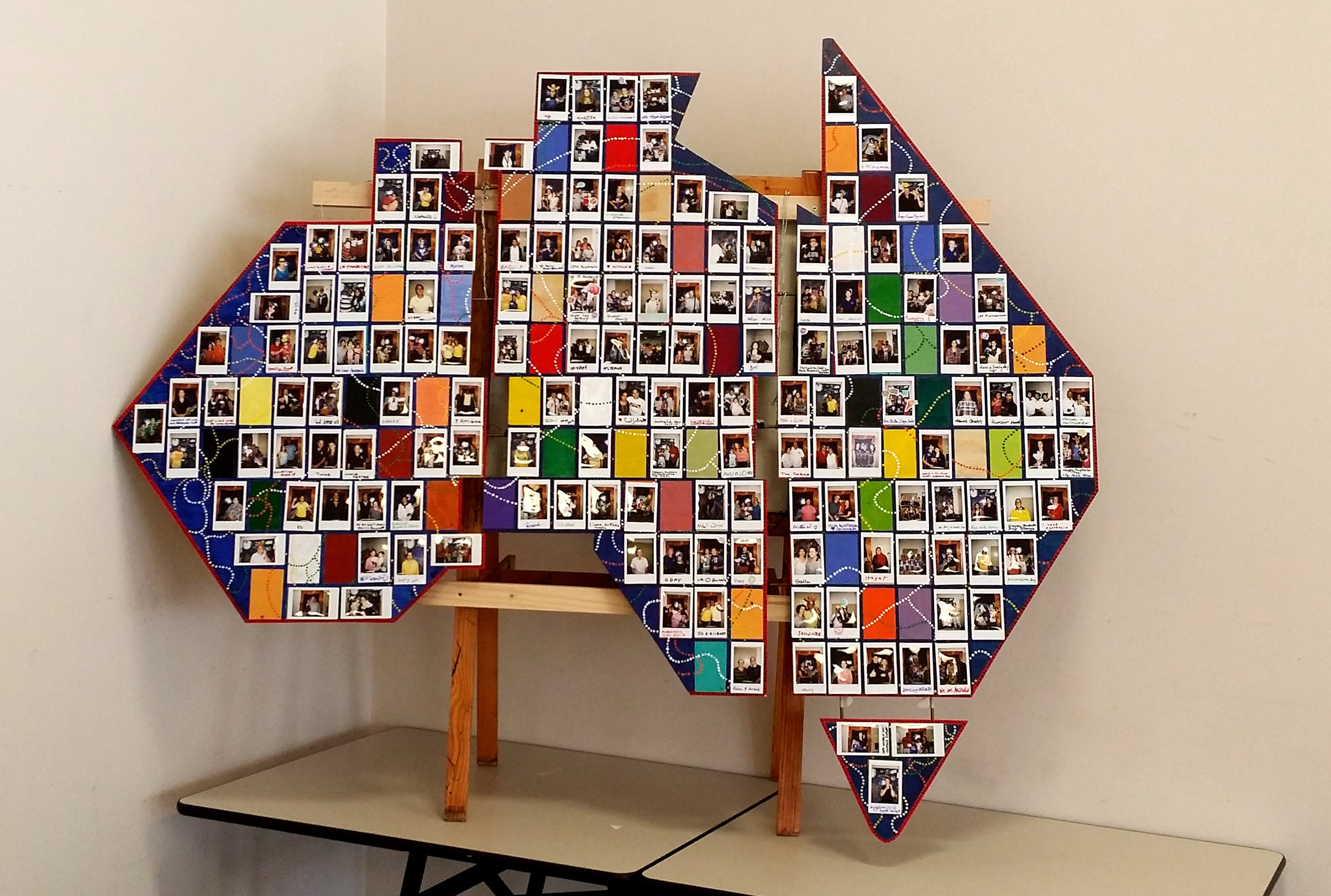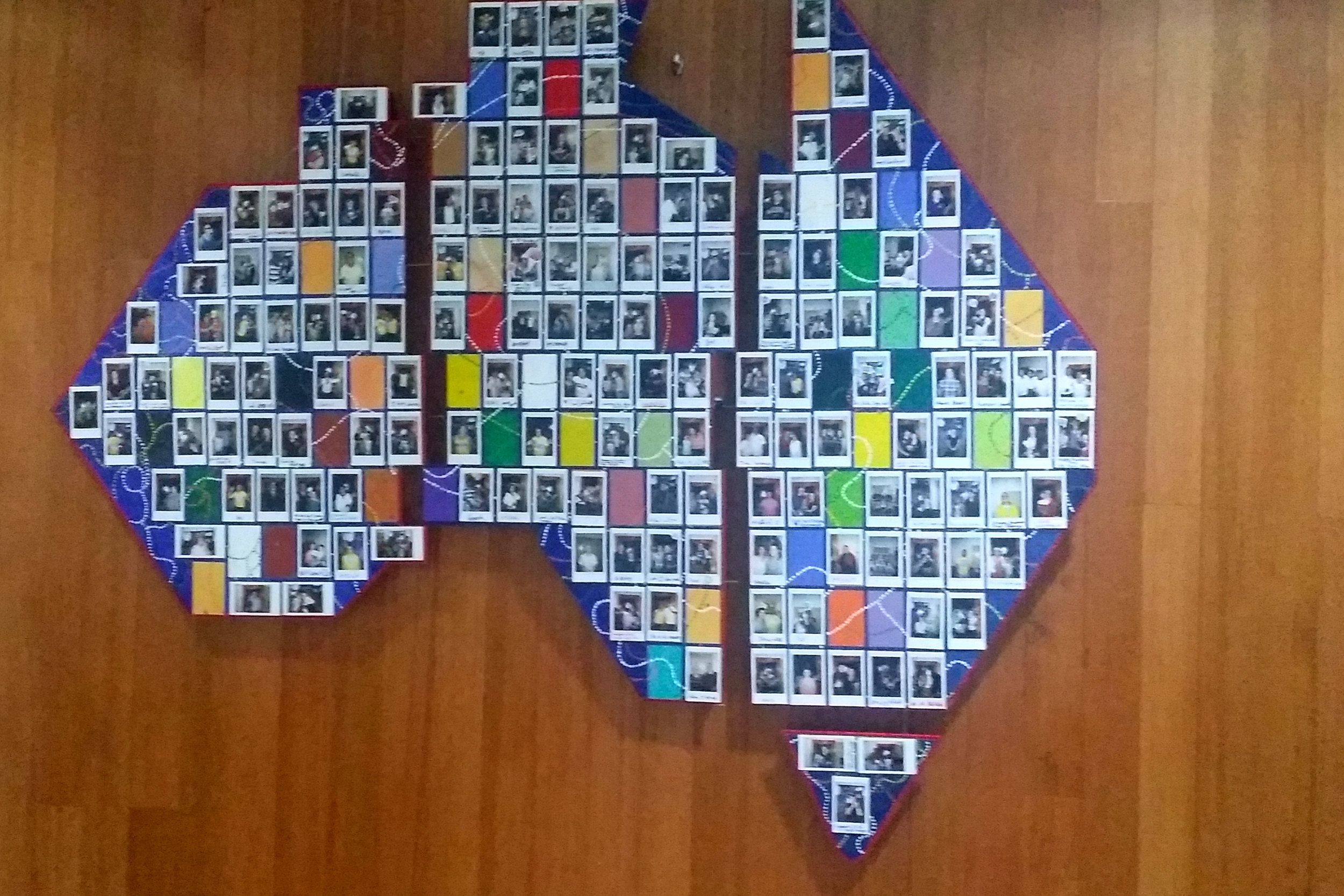Gondwana, Super continent...Artist blog?
While I may have just been able to sneak into the two second attention span of most of my readers as you browse the net, any further dwelling on the science of ‘palaeogeography’; I’m sure will result in a ‘finger flick’ and loss of readership.
So rest assured, this post is not about the 180 million years old split of the Godwananan super continent that eventually resulted in the development of the landmass that we now call Australia, but about my journey and behind the scenes thinking process for putting together a community art project that I recently completed to commemorate Australia Day.
For the past 3 years I have had the privilege of hosting community art events in collaboration with CHARM (Cultural Historical Association of Rodriguans and Mauritians) at Cranbourne’s Balla Balla community center on Australia day. The artwork completed on the day is then displayed at the community center for the year. These projects are designed not only to engage and involve the participating crowds in a short, fun filled activity, but also to reinforce, reaffirm and reiterate the message of tolerance, integration, harmony and multiculturalism – i.e. all that I consider great about modern day Australia.
This year the idea started off as a simple concept, take a bunch of instant photos and organize them into an artwork ‘Portrait of Australia’ that is aesthetically pleasing and can be easily displayed at the community center. With this goal in mind, I started throwing around a few concepts in my head. The trick was to develop a unique design that relates to Australia and conveys a message of harmony, integration and multiculturalism (concepts that are dear to me and very pertinent to the country and the municipality I live in).
The overall dimensions of the finished artwork had to be large enough to accommodate a sufficient number of photographs but at the same time be easily transportable. Similarly the piece had to be sturdy but light so that it could be easily displayed at the community center rail hanging system. It is always good to recognize and work within the limitation of the display locations as this may impact the overall design of the piece.
I decided to use the Australian map as the back drop, but had to use artistic licence to modify the geometry to maximize the number of photographs that could be fitted in. The backdrop was cut out of thin plywood but had to be strengthened with wooden bracing to keep the final piece from collapsing on itself. I decided to break the mainland into 3 parts to facilitate construction, transportation and display. The display wall had a slight curve, and ideally the art work needed to conform to the wall contours.
Tasmania being separated from the main land presents an interesting challenge as it needed to tie into the overall artwork while maintaining its isolation from the rest of the continent. I decided to use brass studs to maintain the gap and at the same time attach Tasmania to the main piece. Later, I used the same technique to change the aspect ratio of the final art piece, creating a gap between the three pieces on the mainland map as well.
Defining the final outcome of a community art activity is difficult, as the audience participation and enthusiasm can vary. Contingencies had to plan into the design, so that lack of audience participation does not impact the overall aesthetics of the piece. My initial plan was to have a simple pre-marked grid to locate the position for each photo and I extended this theme to included colour grids. This not only made the overall art work more vibrant but also contributed to the overall theme of cultural diversity and harmony.
I used doted lines to highlight the indigenous theme and to integrate the piece together into a single body. Though seemingly random, each line was designed to intersect with the others at various locations signifying collective effort and the coming together of the community in achieving a common goal.
Just like communities, I wanted the art piece to evolve in a random fashion during the course of the event. I numbered each grid and introduce a sub-activity of requiring the participants to draw out numbers that defined the location for their photo. This improved participant engagement and also avoided formation of groups based on ethnicity, colour or background. We invited participants to sign their photos and write messages and also provided token gifts to encourage participation.
Community participation based art projects require one to take up multiple roles – designer, organiser, communicator and an events manager both before and during the event. My experience suggest that its best to recognise that that this is not a single person job and therefore it is best to get some help especially during the event. For this year’s event I was lucky enough to recruit two volunteers who took ownership of the event and helped me in executing the project.
We had great participation from the community and the project was a great success. I am sure as long as the artwork hangs on the wall of Balla Balla centre, it will serve as a constant reminder of what we as Australians stand for and should aim to be as a society.
Long live peace, harmony, integration and multiculturalism.









